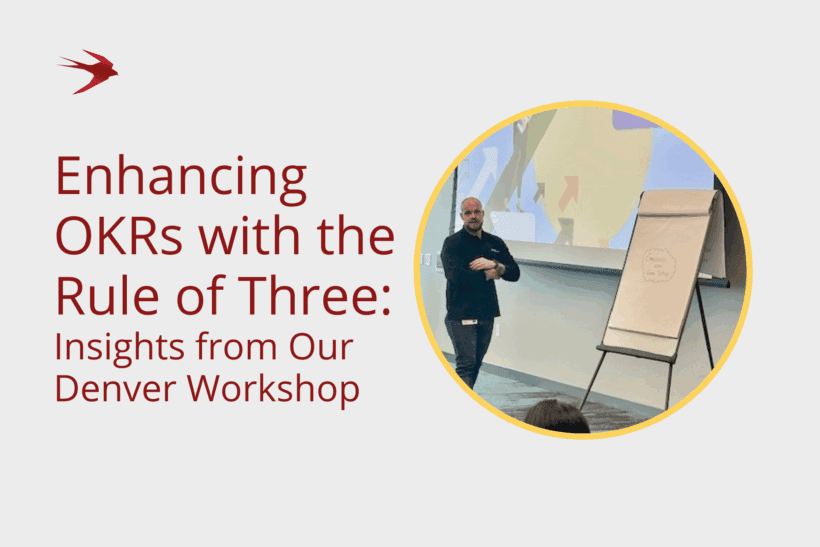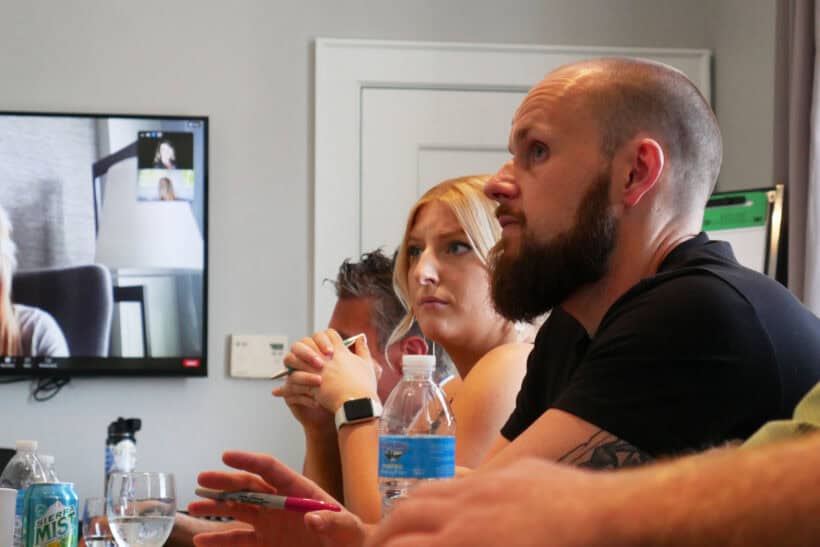In many of our Agile Leadership coaching sessions with managers and leaders, we regularly hear them ask things like “How can I be more agile?”, “I would like to be an agile leader” and “How can I be agile in this situation?”.
We enable these people to become agile leaders by embodying a coaching mindset, using empirical data to guide their decision making, empower their teams to make quick, informed decisions, prioritise based on economics, and understand how to use agile principles to guide them.
This article covers some of the topics discussed in these coaching workshops and focuses on 5 tools and techniques that every agile leader needs to know.
What is Agile Leadership?
As a result of the popularity of agile transformations and agile methods, agile leadership has come to the fore. Agile leadership is a management approach and mindset, based on the Manifesto for Agile Software Development.
The Scaled Agile Framework describes the dimensions of an agile leader as leading by example, embodying an agile mindset and principles; and leading change by creating the right environment for change and preparing their people.
An agile leader embraces a culture in which support of learning forms part of working life and its regular operations, daily routines, and conversations.
Agile leaders advocate for a culture and environment of learning, flexibility, support, and trust. They approach every situation as an opportunity to learn, to practice continuous improvement, and to help their people to grow into more effective versions of themselves.
[Case Study] Creating Agile Leaders in a SaaS Company >

Must-Have Tools and Techniques for Effective Agile Leadership
To become an effective agile leader, consider the following 5 agile leadership tools and techniques.
Embody a Coaching Mindset
According to the 2020 International Coaching Federation (ICF) Global Coaching Study, coaching is on the rise within organisations. This is partly due to a coaching mindset becoming a desirable trait in agile leaders.
One of the four core values of the Manifesto for Agile Software Development is ‘Individuals and interactions over processes and tools’. Developing people and the interactions that they have through constant coaching is fundamental in an agile approach, whether it be software development as originally intended, or when applied to agile leadership.
A great way to build your coaching muscle and practice coaching daily is to move away from providing all the answers and train yourself to provide questions that trigger insight. Consider using the Seven Essential Questions by Michael Bungay Stanier:
- What’s on your mind?
- And what else?
- What is the real challenge for you?
- What do you want?
- If you’re saying yes to this, what are you saying no to?
- How can I help?
- What is most valuable for you?
These questions are not intended to be followed one after the other, or in the order they’re listed, but they can be combined and tweaked to lead to some great coaching conversations. The net outcome is that by providing your people with the opportunity for some high value thinking, high value outcomes will follow.
The skill here for an agile leader is to know when to coach and when to direct – but don’t let that stop you from practicing this technique and watch as your people begin to grow!
Data Driven
Agile leaders should consistently refer to data to help them guide their decisions. Many traditional metrics are often lagging indicators with longer feedback, something that isn’t conducive to an agile approach. Therefore, agile leaders use alternatives like Objectives and Key Results (OKRs).
Without data, you’re just another person with an opinion.
W. Edwards Deming
OKRs, when done right, are great for aligning strategy to execution across organisational hierarchies, departmental boundaries, and team structures. When defining the OKRs, ensure that the key results are leading indicators to ensure that the organisation is moving toward its objectives.

Another way agile leaders can become more data driven is to support the teams in capturing their work in a standardised tool, such as Jira or ADO. If you do not have a consistent mechanism in place to capture the flow of work, you will struggle to be predictable in your delivery.
Lastly, remember that the facts are friendly. In organisations where reliable data is not in abundance, we have experienced that people can get defensive around data, especially if it is perceived to show a negative trend. The key with any data is to be objective and transparent. What is the data telling you? How does this data help us to move forward in the future? If you create a judgement-free culture of ‘the facts are friendly’, data can become one of your most powerful tools.
The facts are always friendly, every bit of evidence one can acquire, in any area, leads one that much closer to what is true.
Carl Rodgers
Relinquish Power
Great agile leaders strive to ensure that they are not a bottleneck for their teams. We wrote about how agile leaders can increase their speed to decisions in detail in a previous post.
Leaders can do 3 simple things to empower their teams to ultimately get more done:
- Provide their teams with autonomy to direct themselves
- Allow time for teams to practice mastery in their field
- Motivate teams with a compelling vision to give their work meaning and purpose.
Weighted Shortest Job First (WSJF)
Effective agile leaders do not let hierarchies, personal objectives or short-term gain get in the way of effective prioritisation.
Agile leaders can use WSJF to present an objective view of prioritisation and to gain stakeholder alignment. They are not afraid to challenge stakeholders and their views of what is important and use WSJF as an economic framework to do this. To make WSJF work, leaders must lead by example, trust the process and be transparent in the process of prioritising.
Make the Agile Manifesto a Tool
Finally, when we are coaching leaders, we encourage them to use the Agile Manifesto core values, and twelve principles to lead by example. Using the Agile Manifesto as a practical thinking tool, we encourage leaders to be mindful of the longer-term impacts of their decisions and help to build a strong agile mindset.
We ask leaders to reflect on some recent decisions that they have made and then to review the Agile Manifesto values and principles with a specific decision in mind. We ask “how does this align with the principles?”. If the answer is “it doesn’t”, then we will explore the impact of that and some alternative solutions.
We use the principles to help them to think about the problems differently, challenging existing mindsets and behaviours. If you are currently working in an agile environment and want to assess your own agile mindset, we encourage you to reflect on some recent decisions you have made against each principle. This technique is not only useful for self development through reflection, but can also be a handy tool to validate your decisions prior to making them.
Unlocking Your Potential as an Agile Leader
They are many aspects to being a great agile leader, with some of the most impactful highlighted in this article. Our Agile Masterclass coaching programme delves deeper into these areas and much more. However, if you’re looking for one-to-one support, get in touch today to discuss your agile leadership coaching needs.


